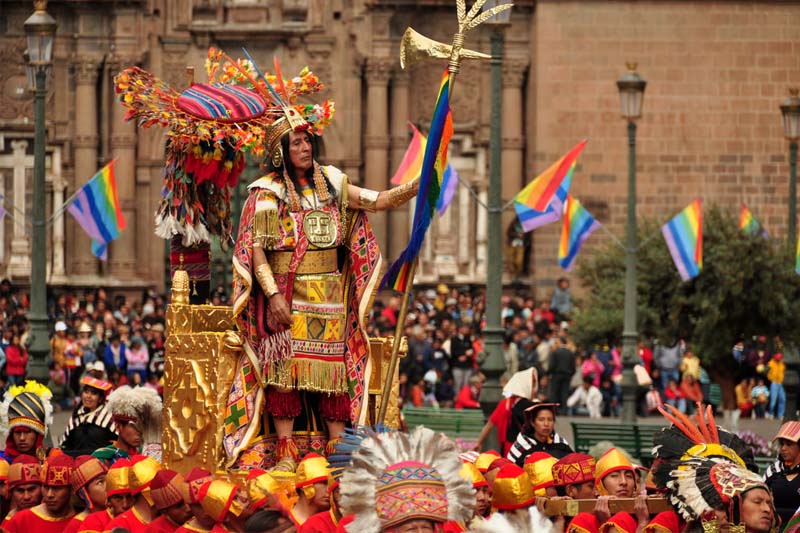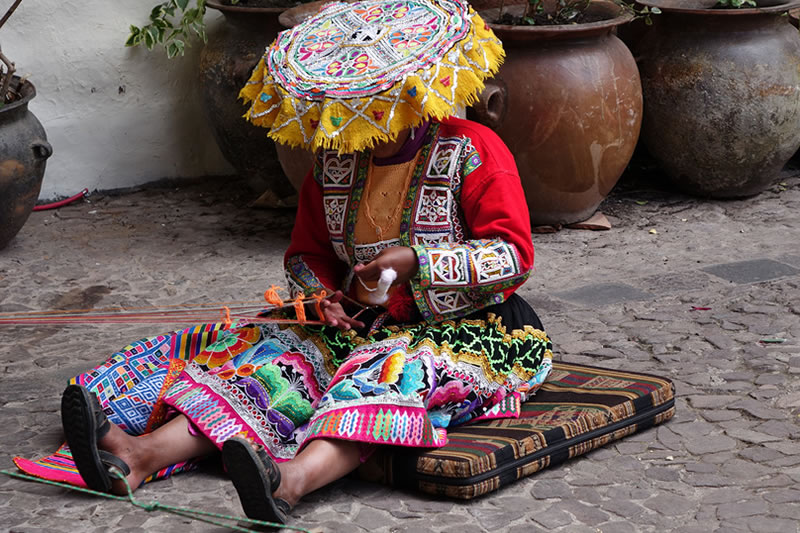Organization of the Inca Government
The Inca empire, like most complex civilizations around the world, developed some kind of system to regulate the relations between its members. Thus, the organization of the Inca government had to be splendid. Otherwise it would have been impossible to build cities like Cusco or Machu Picchu.
- How was the Inca government organized?
- And what was the political organization like?
- What was the Inca social organization like?
- What was the economy like?
- What was the Inca’s way of working?
- How was Inca communication organized?
- What was the organization like in Machu Picchu?
The Incas had a monarchical and theocratic government where the Inca emperor was the maximum figure because he symbolized the son of the sun god. The Inca government was also based on simple laws that valued work and punished idleness and theft. It is the largest empire in South America that encompassed part of the current territories of Peru, Bolivia, Chile, Argentina, Ecuador and Colombia.
How was the Inca government organized?
- The Inca empire was divided into 4 territories, also called ‘theirs’: the Chinchaysuyo (north), Antisuyo (east), Collasuyo (south) and the Contisuyo (center of the empire with the city of Cusco as the capital).
- The government had the Inca as its maximum exponent in power. The established laws prioritized work and punished loafers and thieves.
- The immense Inca territory was communicated through the ‘qhapac ñan’ road network, which communicated the main points of the empire that covered the current territories of Peru, Colombia, Ecuador, Bolivia and Argentina.

The Inca was the highest authority of the Tahuantinsuyo
And what was the political organization like?
The Inca civilization had a monarchical and theocratic government where the highest authority was ‘the Inca’. The Inca state was divided into 4 of its own and each one was in charge of a ‘Tucuy Ricuy’, who acted as governor of said territory.
a) The Inca : It was the highest authority of the empire. Emperors were attributed a divine origin and titles such as ‘Sapa inca’ (divine Inca).
b) The imperial council : It was the maximum entity dedicated entirely to the advice of the Inca. It was made up of 8 people.
c) The governors of theirs (Suyuyuq) : There were four rulers of their own.
d) The Crown Prince (Auqui) : The tradition of the ‘Auqui’ was established by Pachacutec, founder of Machu Picchu. His son Túpac Yupanqui was the first ‘auqui’.
e) The high priest (Willaq Uma) : He governed religious ceremonies with the Inca.
f) The amautas (Hamawt’a) : Sages who prepared the Inca elite.
g) The general of the imperial army (Apuskipay) : He commanded the troops during the wars.
What was the Inca social organization like?
Inca society was hierarchical and rigid: forming a pyramid where the Inca was at the head, in an empire where there were great differences between social classes. These differences were respected by each of the inhabitants of the empire and the people who constituted the social base.
a) Royalty
- Inca royalty – Formed by the nuclear family of the Inca: the auqui (son), the coya (wife).
- La panaca real – Frontline relatives of the Inca (first generations of each panaca).
b) Nobility
- Blood Nobility – Remaining members of the panacas (relatives).
- Nobility of privilege – People who stood out for their services (priests, acllas, high chiefs).
c) The people
- Ayllu Hatun Runa – The people in general (peasant).
- Mitimaes – Groups transferred to colonize new regions teaching the peoples new customs.
- Yanaconas – Servants the Inca and the empire. Many of them were prisoners.
What was the economy like?
The Incas based their economic activities on agriculture and livestock. The main products were potatoes, quinoa, corn, goose, tomato, sweet potato and coca leaf. The animals that were domesticated were the llama, the alpaca and the guinea pig. Although the exchange currency did not exist, they did use barter as a product exchange system.
a) Agriculture – It was the way in which they worked the land by a method in which the agricultural tasks were carried out through mutual community aid.
b) Livestock – The Incas domesticated poultry, hunted wild birds and also fished, but it was the llama and the alpaca, camelids that played an important role in their economy. They were used as pack animals, as a source of wool, and as food.
c) Inca trade – It was based on the exchange of products between the different regions of the empire. The dried fish arrived from the coast to the Andes mountain range, by the Inca road network. In the same way, the inhabitants of the coast received agricultural products from the Andes.
What was the Inca’s way of working?
For the Incas, work was the main daily activity. It was divided into 3 types of activities: a) mita, b) minka and c) ayni. These activities were mainly agricultural work, although activities were also carried out in the homes of the communities.
a) The mita – It was a system of work in favor of the empire. It was shift work in the construction of roads, fortresses, bridges, urban centers, temples, irrigation canals, and mining. There were special tasks such as the freighters of the Inca, chasquis, dancers and musicians. The people forced to do this work were married adults between 18 and 50 years old, but not women.
b) The minka – It was the work done in favor of the ayllu, communal work for free and in shifts. Entire families participated in state buildings, such as irrigation canals, home repair, etc. No person refused, if they did, they were banished and expelled from the ayllu and the empire.
c) The ayni – It was a reciprocal family work system among the ayllu members. They were carried out in agricultural work and house construction. It consisted of the help of a group of people to a family, which had to correspond in the same way.

Demonstration of weaving in Andean camelid wool
How was Inca communication organized?
The Incas did not have a written communication, so it was necessary to display the different messages in each corner of the empire orally. To do this, they built a network of roads that linked the main points of the empire. These were called ‘Qhapac Ñan’. Those in charge of walking these paths and carrying the message were the so-called ‘Chasquis’.
a) The Qhapac Ñan – The Inca road network that connected the main points of the empire, which included the current countries of Chile, Bolivia, Peru, Colombia and Ecuador.
b) The Chasquis – People in charge of transporting messages on foot along the ‘Qhapac Ñan’ road network. The chasquis used the relay system. At certain points they fed on the famous ‘colcas’ that were deployed at some points along the way.
c) The Inca Bridges – To cross the most inaccessible points of the mountains, the Incas built bridges. These were built in different ways: suspension bridges made of ichu, bridges made of logs, bridges made of stone and floating bridges.
What was the organization like in Machu Picchu?
Machu Picchu was an Inca city that served as a religious site and transit home for the Inca Pachacutec. The highest authority of the site was the Inca. When the latter was not in the place, the high priest represented the divine authority in Machupicchu. The base was the village or the ‘Ayllu Hatun Runa’.
a) The Inca – The highest authority in Machupicchu. The Inca who ordered its construction was Pachacutec (1438 – 1471).
b) The high priest – The highest religious authority in the Inca city that represented the authority of the Inca when he was not in Machupicchu.
c) Ayllu Hatun Runa – The social base in Machupicchu was the people who worked the agricultural lands and carried out the maintenance work in the Inca city.
By Ticket Machu Picchu – Last updated, August 15, 2024